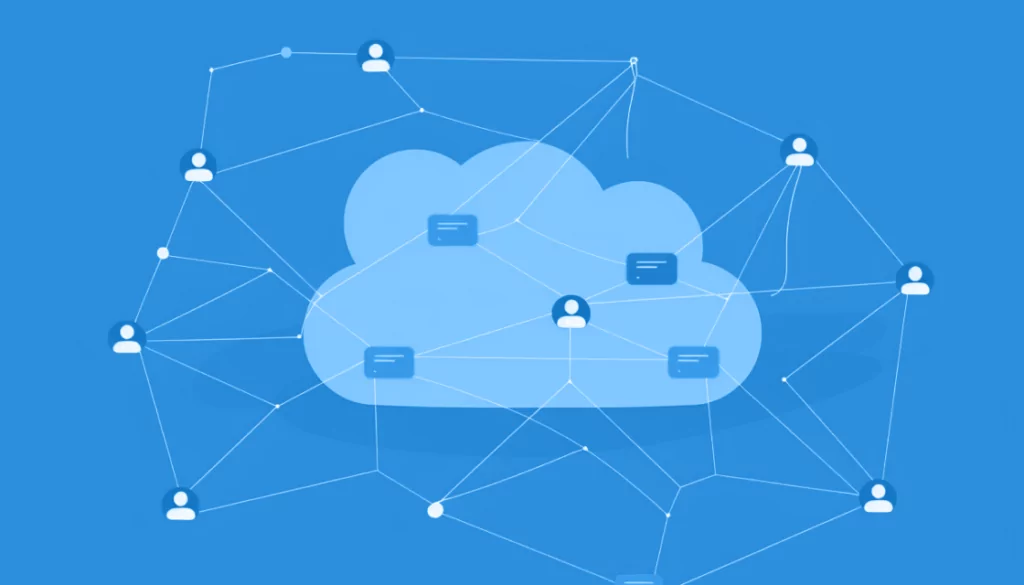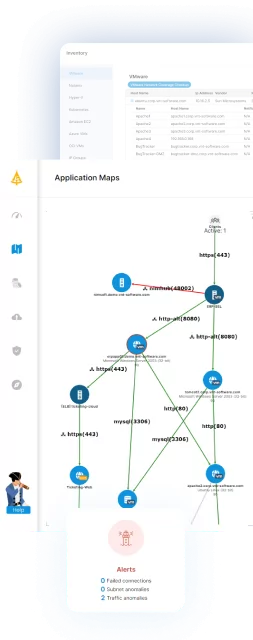What Is a Business Continuity Strategy?
A business continuity strategy is a plan to ensure that a company continues to operate during and after unexpected events, such as natural disasters, cyber attacks, or supply chain disruptions. It involves identifying potential risks to the business and establishing protocols to mitigate these risks.
The aim is to maintain critical functions and quickly resume full operations. This strategy is vital for minimizing financial loss, protecting the company’s reputation, and protecting the interests of key stakeholders.
The strategy involves planning and coordination across various departments. It includes understanding the primary threats to operations and their potential impact. Companies tailor their strategies to fit their organizational needs, industry, and size. A well-articulated business continuity strategy prepares an organization for crises and improves its resilience.
Table of Contents
Toggle- What Is a Business Continuity Strategy?
- Business Continuity vs. Disaster Recovery: Understanding the Differences
- Objectives of a Business Continuity Strategy
- Examples of Business Continuity Strategies
- Tips from the Expert
- 6 Steps to Building an Effective Business Continuity Strategy
- Supporting Business Continuity with Faddom Dependency Mapping
Business Continuity vs. Disaster Recovery: Understanding the Differences
Business continuity and disaster recovery are closely related but serve different purposes within an organization’s risk management framework.
Business continuity focuses on maintaining essential functions during and after a disruption. It emphasizes proactive planning to keep operations running, including remote work capabilities, supply chain adjustments, and alternative communication methods. The goal is to ensure minimal interruption to services and operations.
Disaster recovery is more narrowly focused on the restoration of IT systems, data, and infrastructure after an incident. It involves reactive measures like data backups, system failovers, and recovery protocols to bring technology environments back online.
Learn more in our detailed guide to business continuity vs disaster recovery
Objectives of a Business Continuity Strategy
The primary objective of a business continuity strategy is to ensure that critical business operations can continue with minimal disruption during and after a crisis. This includes maintaining essential services, protecting key assets, and enabling rapid recovery.
Key objectives include:
- Identifying critical functions: Determine which processes and services are essential to business survival and must be prioritized during a disruption.
- Minimizing downtime: Reduce the time required to restore operations to an acceptable level after an incident, minimizing both operational and financial impact.
- Protecting data and assets: Ensure that important data, infrastructure, and intellectual property are protected and recoverable.
- Maintaining customer and stakeholder confidence: Demonstrate reliability and preparedness to customers, partners, regulators, and investors.
- Ensuring compliance: Meet regulatory or contractual obligations that require continuity planning and disaster preparedness.
- Improving organizational resilience: Build the capacity to adapt to changing conditions and unexpected threats.
Examples of Business Continuity Strategies
Business continuity strategies often vary based on organizational needs but generally include several key components such as crisis management plans, communications plans, network recovery, and data recovery strategies.
Crisis Management Plans
Crisis management plans are integral to business continuity. They outline processes to manage various emergencies that can impact operations. This includes defining roles, responsibilities, and procedures for decision-making under crisis conditions. Effective crisis management also entails communication protocols to ensure all stakeholders are informed.
Crisis management ensures businesses have a clear structure to act decisively and maintain order amidst chaos. Pre-emptive planning helps organizations minimize confusion, enabling them to act in a controlled, organized manner. Typically, these plans are tested regularly to ensure effectiveness and include updates reflecting changes in the organization.
Communications Plans
Communications plans ensure a coordinated response during disruptions. They determine how critical information is communicated internally and externally. Effective communication systems involve identifying key messages, setting up notification procedures, and designating spokespersons. Employees, customers, and partners must receive timely updates.
These plans also include methods for communicating via various channels, such as email, SMS, and social media. Developing clear communication strategies helps in managing stakeholder expectations.
Network Recovery Plans
Network recovery plans focus on restoring IT infrastructure crucial for business operations. They cover the recovery of data networks, hardware, and software, ensuring that critical applications and services are operational after a disruption. This usually includes data backup solutions, offsite storage facilities, and designated recovery sites to support network re-establishment.
These plans also outline procedures for troubleshooting and coordinating with IT personnel and vendors during recovery efforts. Effective network recovery is vital for minimizing downtime. Regular updates to these plans align them with technological advancements.
Data Recovery Plans
Data recovery plans ensure data accessibility after disruptions due to IT failures, malicious attacks, or natural disasters. This involves regular data backups, utilization of cloud storage solutions, and redundant systems to protect against data loss. These plans aim to restore data promptly.
Organizations often use a combination of on-site and off-site data storage solutions to maximize security and recovery prospects. Testing data recovery procedures regularly ensures their reliability and effectiveness. Additionally, these plans are integrated with overall IT strategies to secure data integrity and availability.
Related content: Read our guide to business continuity management (coming soon)

Lanir specializes in founding new tech companies for Enterprise Software: Assemble and nurture a great team, Early stage funding to growth late stage, One design partner to hundreds of enterprise customers, MVP to Enterprise grade product, Low level kernel engineering to AI/ML and BigData, One advisory board to a long list of shareholders and board members of the worlds largest VCs
Tips from the Expert
In my experience, here are tips that can help you better build and refine a business continuity strategy:
- Map interdependencies beyond first-level impacts: Go deeper than direct impacts—map cascading dependencies between applications, vendors, people, and infrastructure. This helps uncover vulnerabilities where a non-critical system indirectly affects mission-critical functions.
- Integrate business continuity with DevOps pipelines: Automate validation of backup and failover processes as part of CI/CD pipelines. This ensures continuity strategies remain aligned with constantly evolving systems and that recovery procedures are tested with every major deployment.
- Establish continuity metrics at the executive level: Go beyond RTO and RPO by introducing board-level KPIs like “Continuity Readiness Score” or “Crisis Response Efficiency Index” to measure organizational preparedness and drive executive accountability.
- Use game theory to simulate multi-crisis scenarios: Design exercises that combine concurrent crises (e.g., cyberattack during a natural disaster). This builds decision-making resilience under complex and conflicting pressures.
- Create a dynamic supply chain risk map: Use real-time data and AI tools to maintain a live map of supply chain vulnerabilities. Identify single points of failure and evaluate vendor health, geopolitical risk, and inventory volatility dynamically.
6 Steps to Building an Effective Business Continuity Strategy
An effective business continuity strategy involves several critical components. Conducting thorough assessments and developing recovery plans are key elements.
1. Conduct a Risk Assessment and Business Impact Analysis (BIA)
Risk assessment is the starting point for business continuity planning. It involves systematically identifying threats that could impact the organization’s operations, such as natural disasters, cyber attacks, utility failures, labor shortages, or geopolitical events. Each risk is evaluated based on likelihood, potential impact, and the organization’s ability to respond.
Once risks are identified, the business impact analysis (BIA) quantifies the consequences of business process disruptions. The BIA evaluates the financial, operational, reputational, and regulatory impacts of downtime on each function. It identifies critical functions, dependencies (people, systems, suppliers), and recovery priorities.
Key outputs include the Recovery Time Objective (RTO)—the maximum acceptable time to restore a function—and the Recovery Point Objective (RPO)—the maximum acceptable amount of data loss.
2. Develop Recovery Strategies
Recovery strategies define how the business will maintain or quickly resume essential operations after a disruption. These strategies are tailored to each critical function identified in the BIA and consider multiple recovery options to ensure flexibility and reliability.
For facilities, this may involve setting up alternate work locations or enabling remote work capabilities. For supply chains, organizations may establish contracts with secondary vendors or stock critical inventory. IT recovery strategies could include redundant systems, cloud-based services, and real-time data replication across geographically separated data centers.
Cost, complexity, and feasibility are key factors in selecting strategies. For example, a high-availability solution with near-zero downtime may be appropriate for a financial trading system but too costly for back-office processes. The goal is to balance resilience with practical implementation.
3. Establish a Crisis Management Team
The crisis management team (CMT) is a cross-functional group tasked with managing incidents that disrupt operations. This team acts as the central decision-making body during crises and is responsible for activating the business continuity plan, assessing the situation, and guiding the response effort.
Members typically include leaders from IT, operations, HR, legal, security, finance, and communications. Each member has predefined responsibilities and authority to act during an incident. The CMT coordinates internal teams, engages with external stakeholders (such as emergency services or regulators), and ensures accurate and timely communication.
To remain effective, the team must train regularly, participate in simulations, and refine roles based on evolving risks. Clear escalation paths and documented procedures allow the CMT to operate under high pressure and make fast, informed decisions during critical events.
4. Implement Resilient IT Systems
Resilient IT infrastructure underpins the continuity of digital operations. This includes designing systems to tolerate faults, recover quickly from failures, and support continuous access to critical applications and data.
Key components include:
- Redundancy: Duplicate systems or components that can take over if the primary fails (e.g., load-balanced servers, redundant network links).
- Failover mechanisms: Automated switching to backup systems during hardware or software failure to minimize downtime.
- Data backups: Regular backups using 3-2-1 strategies—three copies of data, on two types of media, with one copy offsite or in the cloud.
- High availability (HA): Architecting systems to avoid single points of failure, using clustered databases, distributed applications, and geographically separated data centers.
- Cybersecurity measures: Endpoint protection, access controls, intrusion detection systems, and incident response protocols that ensure data integrity and system security.
These systems must be monitored continuously and tested routinely to ensure they function under real conditions.
5. Train Employees and Conduct Regular Testing
Employee training ensures that all staff understand their roles in the continuity plan and can execute procedures efficiently during a crisis. Training covers response protocols, communication channels, evacuation procedures, and system access during outages.
Testing validates the business continuity and disaster recovery plans. This includes:
- Tabletop exercises: Simulated discussions of a hypothetical event to evaluate decision-making and role clarity.
- Functional tests: Partial simulations that test components like restoring a backup or switching to a secondary site.
- Full-scale drills: Organization-wide exercises that simulate a real disruption, testing all aspects of the continuity plan.
Each test should be followed by a debrief to analyze performance, identify gaps, and make improvements.
6. Review and Update the Plan
Business continuity plans must be living documents that evolve with the organization. Regular reviews—at least annually—ensure the plan reflects current business operations, technologies, personnel, and risk landscapes.
Triggers for updating the plan include:
- Organizational changes (e.g., mergers, new product lines)
- IT infrastructure changes (e.g., cloud migrations)
- New regulations or compliance requirements
- Findings from incident response or continuity plan testing
- Vendor changes or supply chain shifts
The review process should involve stakeholders from across the organization and include both documentation updates and revalidation of strategies and assumptions. Version control and clear documentation of changes ensure traceability and accountability.
Supporting Business Continuity with Faddom Dependency Mapping
Faddom enhances business continuity by providing real-time, agentless visibility into all IT dependencies across on-premises, hybrid, and cloud environments. Its continuously updated business application maps enable organizations to understand how their systems interact, identify critical paths, and prioritize recovery during a crisis.
With Faddom, IT teams can minimize downtime, avoid hidden risks, and confidently manage changes, ensuring that continuity plans are precise, actionable, and consistently aligned with the live environment. This positions Faddom as a crucial facilitator of resilience, empowering companies to transition from reactive recovery to true operational readiness.
Fill out the form in the sidebar to start your free trial or schedule a demo with one of Faddom’s experts!







